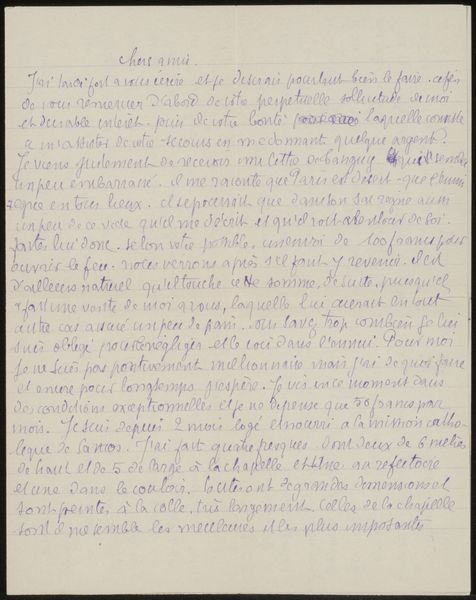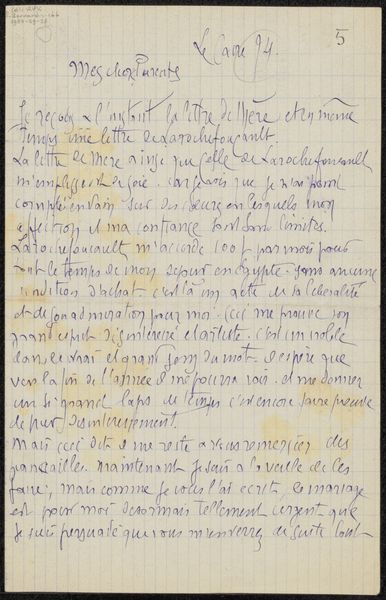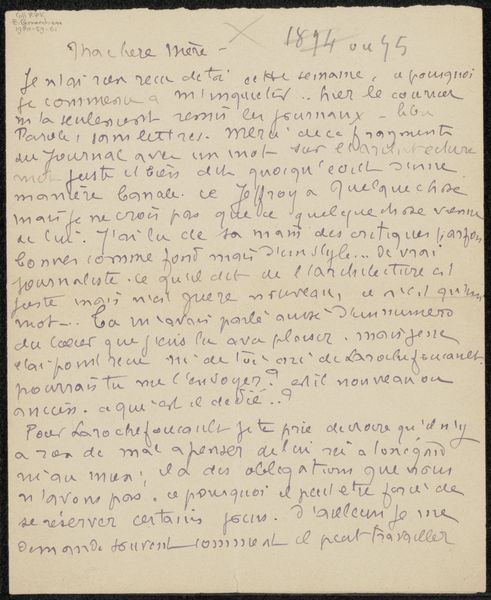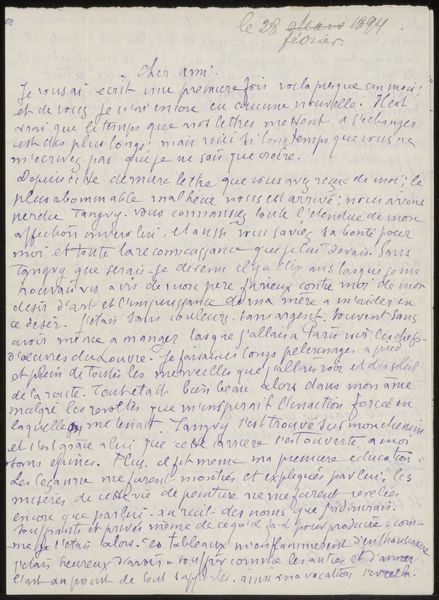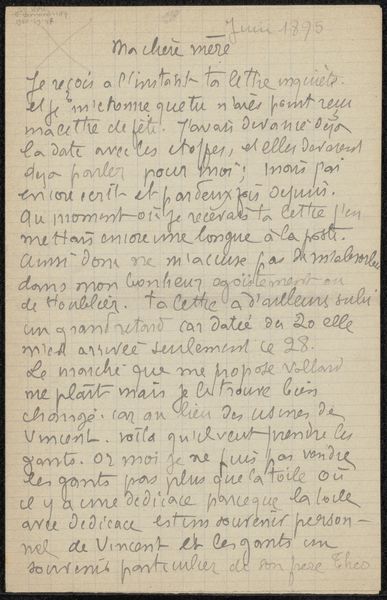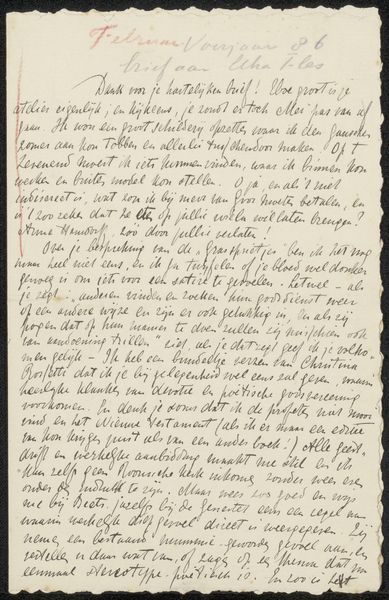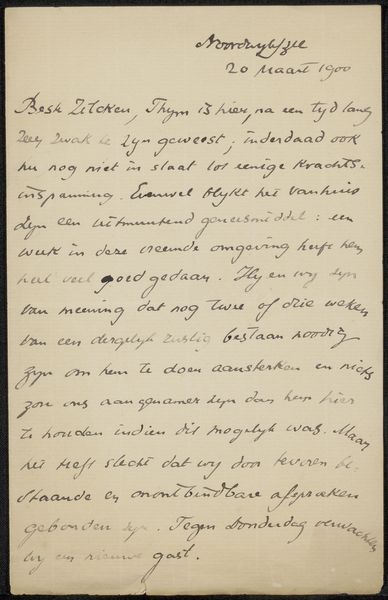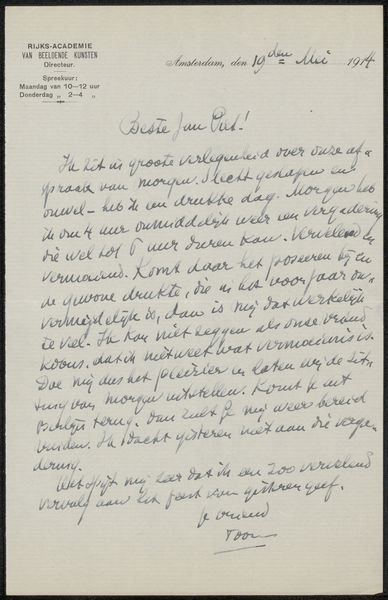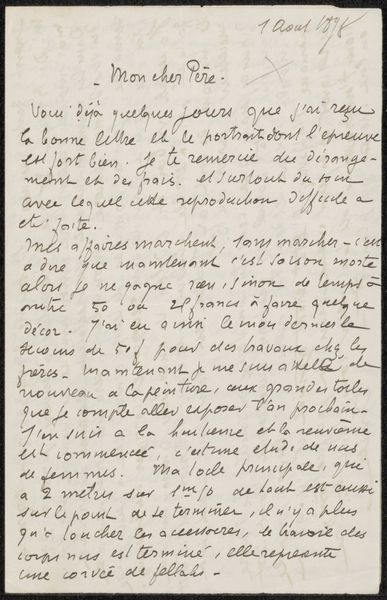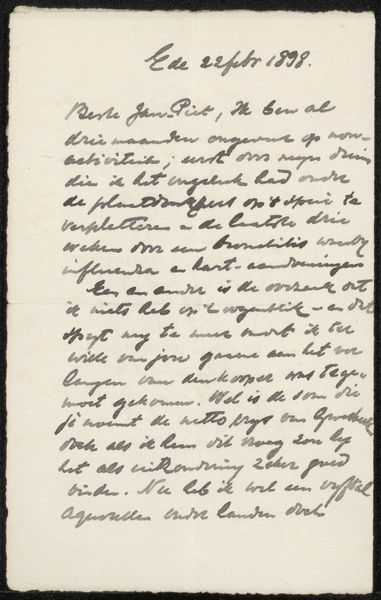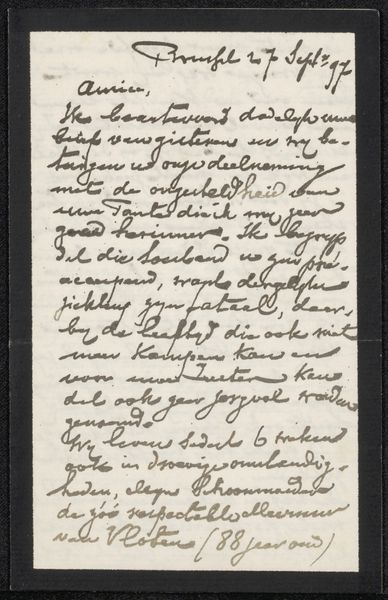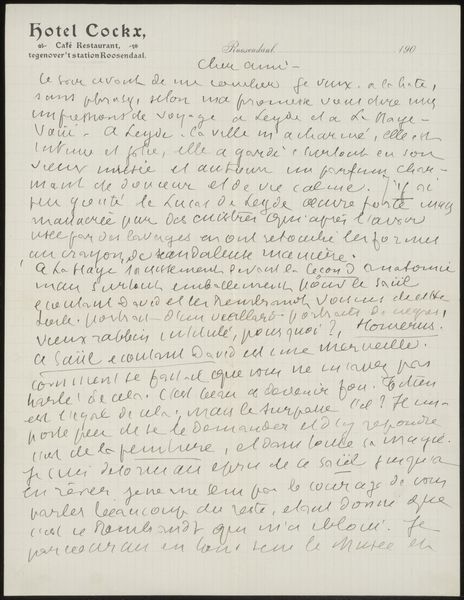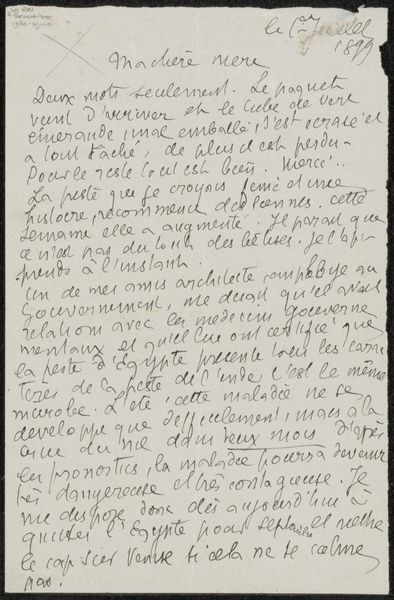
drawing, paper, ink
#
portrait
#
drawing
#
script typography
#
hand-lettering
#
hand drawn type
#
hand lettering
#
paper
#
ink
#
hand-written
#
hand-drawn typeface
#
fading type
#
calligraphic
#
thick font
#
handwritten font
Copyright: Rijks Museum: Open Domain
Editor: Here we have "Brief aan Emile Ernest Bernard en Héloïse Bernard-Bodin" by Emile Bernard, created sometime between 1878 and 1941. It’s ink on paper, essentially a handwritten letter. It's striking how the act of writing itself becomes the art here. How would you approach understanding this piece? Curator: Considering its materiality, let's examine the means of production. The hand-lettering signifies a direct connection to the artist’s labor and intention. This moves beyond the content of the letter and emphasizes the process: Bernard's physical act of writing and the choices made with the ink, the pressure applied, the rhythm of the hand. What kind of relationship might we explore between this, say, and industrialized printing of the time? Editor: I see your point. So, it’s not just about the *what* is being communicated, but the *how*. Are you suggesting it elevates craft to fine art by focusing on the labor involved? Curator: Precisely. And further, consider the social context: A hand-written letter is an intimate, personal form of communication, a pre-industrial form in a rapidly industrializing world. Do you think this letter might then be seen as a resistance to that industrialized process of mass communication? It could also function as a marker of class. Editor: I never thought of it that way! It's easy to see the letter just for the information, but the physicality and the time taken… Curator: Exactly! The fading type and varying ink density tell a story of its creation. It is an archive of labor, literally documenting Bernard's actions and, indeed, perhaps subtly resisting larger changes. The value lies not just in the information being conveyed but in the act of creation itself. This lens transforms the letter from a mere document into a commentary on the social implications of artistic production. Editor: That definitely gives me a new way of seeing this, appreciating it as more than just a letter but an artistic process in itself. Curator: Indeed, art exists in the action, labor, and materials themselves. The letter then documents an attitude of creative production itself.
Comments
No comments
Be the first to comment and join the conversation on the ultimate creative platform.
